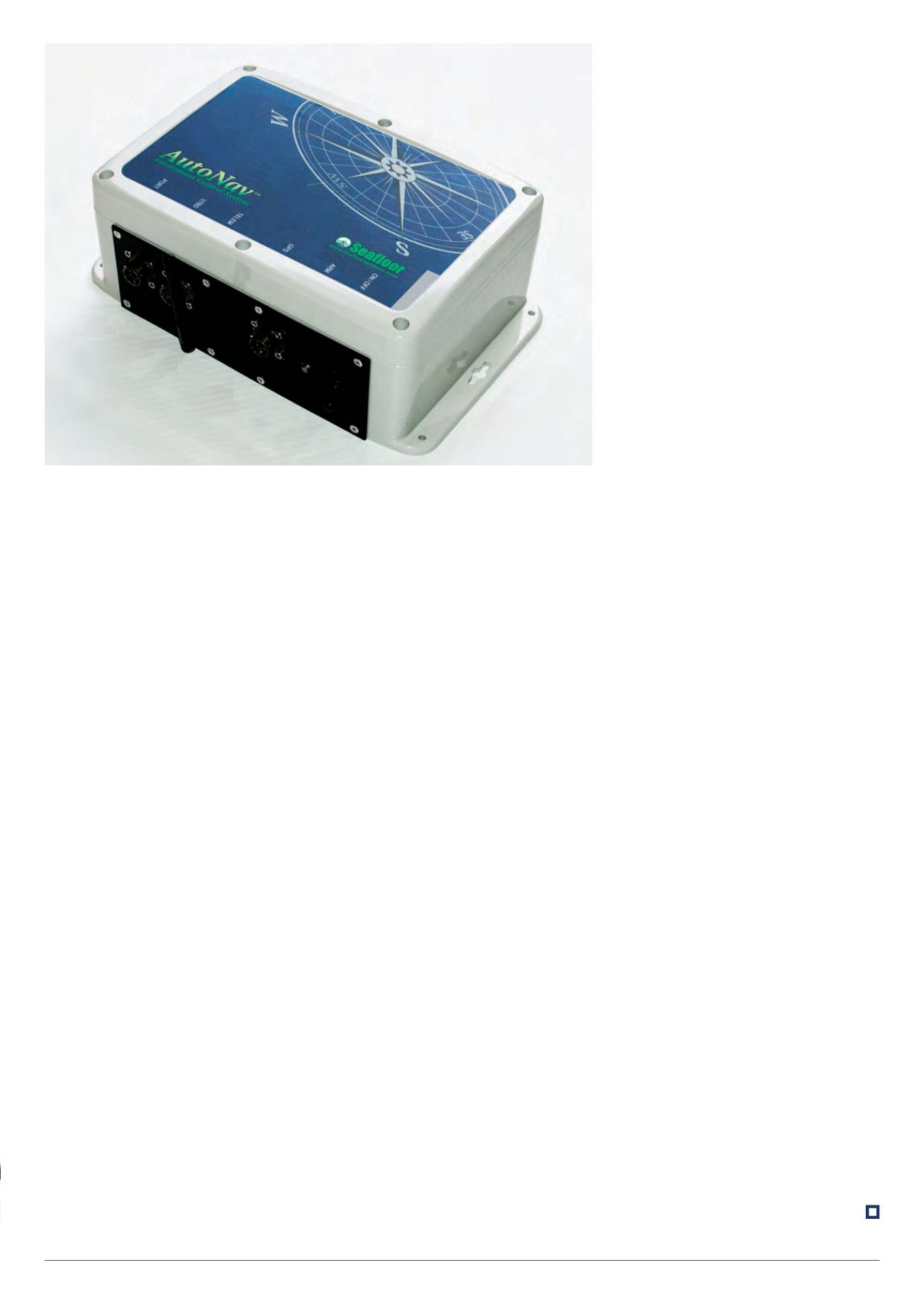

89
anode, the current reading obtained by the
probe is usually displayed on a separate
unit, which means it must be transcribed
by the pilot or assistant in a manner that
still relates the reading to its anode.
Atlantas Marine’s new video tool,
however, creates both a permanent
record of the readings and an overlay
on the ROV’s video display. Handwriting
notes becomes unnecessary, and the
recordings can be viewed later to relate
the data to their exact location, avoiding
mistakes or ambiguity.
The product was initially used with the
VideoRay ROV, as Charlie Foll explained.
“The CP overlay connects in line between
the VideoRay control box and VideoRay
tether. It takes power from the tether and
puts the CP voltage reading onto a video
overlay. We use the Buckleys contact and
proximity probes, and have successfully
deployed this on the VideoRay ROV as
well as the Ocean Modules V8 ROVs on
oil rigs and offshore wind turbines,” he
said.
The latest shallow water multi-
beam echo sounder from Kongsberg
Maritime was unveiled at the show. The
EM 2040P is a multi-beam echo sounder
based on the EM 2040 technology, and is
designed for any high-resolution mapping
and inspection application.
The 2040P consists of a sonar head
with both receiver and transmitter
integrated, the EM portable processing
unit and a workstation. Data input from a
motion sensor and a positioning system
are required.
The operating frequency range is from
200 to 400 kHz: 300 kHz for near bottom,
200 kHz in deeper waters and 400 kHz
for very high resolution inspection. The
system has an output sample rate of
more than 60 kHz, using both CW and
FM chirp pulses for a much longer range
with a high resolution. Pulse lengths
range from 12 ms to 14 µs (the latter
giving a raw range resolution of 10.5 mm).
The angular coverage at the 200
and 300 kHz settings is 140
º
, allowing
coverage of five-and-a-half times water
depth, and 120
º
at 400 kHz.
Seafloor Systems launched two
USVs featuring remote and autonomous
control options.
The EchoBoat-ASV is powered by a 12 V
50 Ah UB12500 lead-acid battery pack and
two 7500 W brushless dc outdrive motors
with 240 minutes of battery endurance
at top speed (10 knots). The 23 kg
hydrographic survey platform is compatible
with data acquisition software such as
HyPack, HydroPro or QINSy, and uses the
standard NMEA format for data interface.
Up to 23 kg of payload hardware
can be carried, either pre-installed from
Seafloor’s own systems or supplied
to accept user-specified equipment.
Optional customised cabling allows the
boat to accept existing GPS, GNSS and
RTK positioning systems.
Seafloor’s other new craft, the
catamaran HyDrone-ASV, weighs 14.9 kg
and uses two 12 V, 10 Ah battery packs,
two 180 A water-cooled ECUs and two
3050 W brushless water-cooled motors
for a top speed of 20 knots and 300
minutes’ minimum endurance. A weight
capacity of 11.3 kg is available, and it has
‘all-brand’ GPS compatibility.
The craft is optimised for the HydroLite-
DFX portable echo sounder, which
uses low-frequency (30 kHz) and
high-frequency (200 kHz) transducers
for bottom classification, to penetrate
through soft sediments and detect both
hard layers and the surface layer.
Seafloor’s AutoNav package enables
pre-planned surveys to be uploaded
to onboard memory and executed
autonomously, with manual override
and return-to-base functions. RC and
telemetry use a Futaba 2.4 GHz UHF
controller and two omnidirectional remote
antennae on the ASV, with 2000 m of
operational range for switching between
remote and autonomous control.
Marine Electronics launched its
new Dolphin 2D sonar. Measuring 228
x 130 x 70 mm and weighing 1.6 kg in
water, it is intended for use on small
AUVs and ROVs.
Based on the company’s longer-range
250 kHz Dolphin 3001, the new Dolphin
2D is a 720 kHz model with a one-piece
composite ceramic array consisting of
96 elements. That means it produces
192 acoustic beams, resulting in a 120
º
horizontal display, and clear imagery at
most ranges despite power consumption
never rising above 15 W.
As close in as 0.2 m it provides clear
images at 30 fps, and at 7.5 fps for ranges
up to 100 m. It also contains a nine-axis
MEMS motion sensor, and no surface
image processing is required for its
output, which is by Ethernet or VDSL.
Unmanned Systems Technology
| June/July 2016
Seafloor’s AutoNav allows pre-planned
surveys to be uploaded to onboard memory









